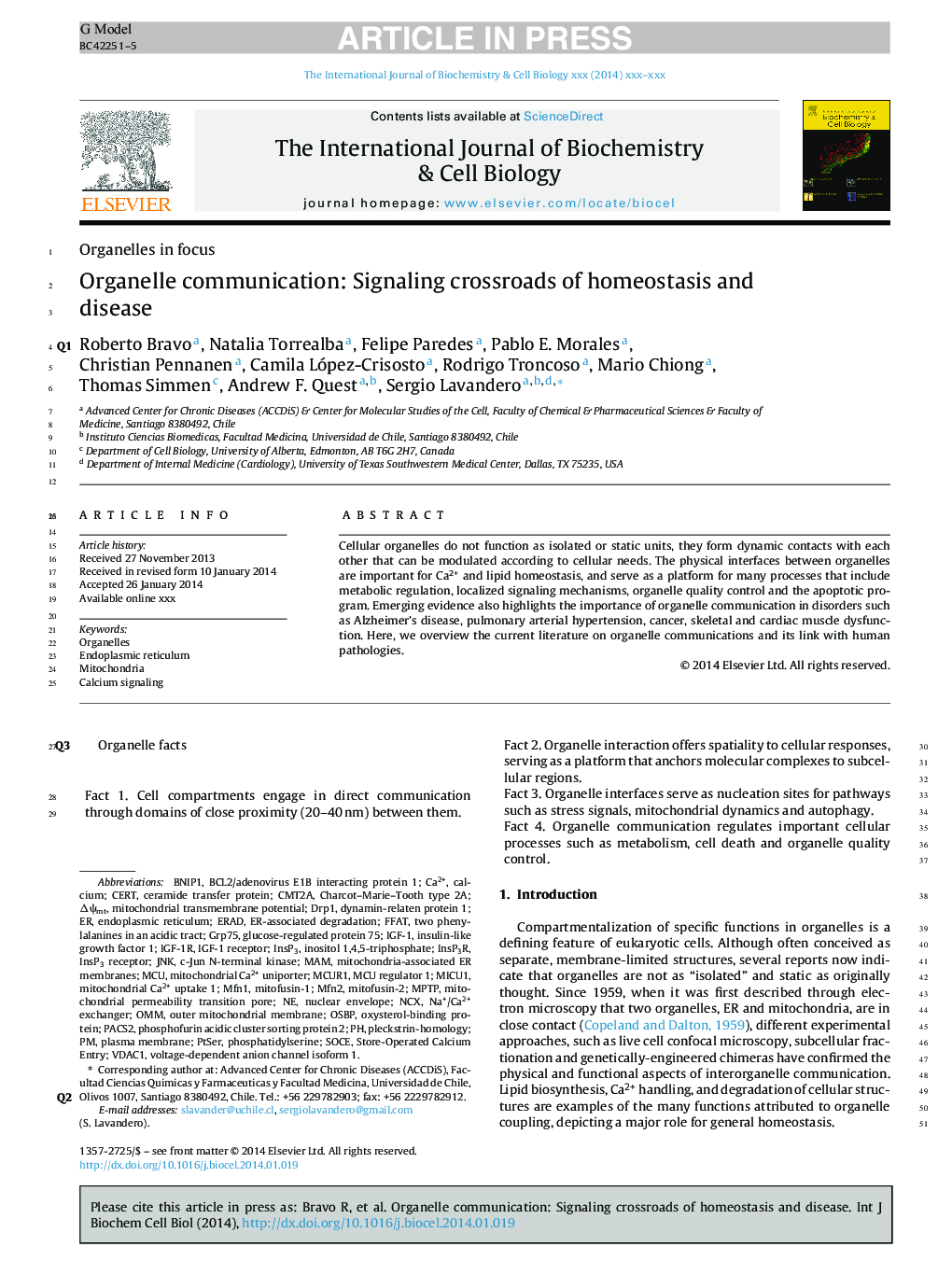| Article ID | Journal | Published Year | Pages | File Type |
|---|---|---|---|---|
| 8323597 | The International Journal of Biochemistry & Cell Biology | 2014 | 5 Pages |
Abstract
Cellular organelles do not function as isolated or static units, but rather form dynamic contacts between one another that can be modulated according to cellular needs. The physical interfaces between organelles are important for Ca2+ and lipid homeostasis, and serve as platforms for the control of many essential functions including metabolism, signaling, organelle integrity and execution of the apoptotic program. Emerging evidence also highlights the importance of organelle communication in disorders such as Alzheimer's disease, pulmonary arterial hypertension, cancer, skeletal and cardiac muscle dysfunction. Here, we provide an overview of the current literature on organelle communication and the link to human pathologies.
Keywords
OMMOSBPCERTMFN2Mitofusin-2OrganellesNCXVDAC1Mfn1InsP3RSOCEIGF-1RInsP3Drp1grp75MPTPMICU1IGF-1MAMCMT2AMCUFFATERADmitofusin-1Mitochondria-associated ER membranesMCUR1Jnkc-Jun N-terminal kinaseCa2+Inositol 1,4,5-triphosphateNa+/Ca2+ exchangermitochondrial permeability transition poreER-Associated Degradationtwo phenylalanines in an acidic tractCalcium signalingendoplasmic reticulumouter mitochondrial membranePlasma membraneinsulin-like growth factor 1PhosphatidylserineMitochondrial Ca2+ uniporterMitochondriapleckstrin-homologyStore-operated calcium entrynuclear envelopeMitochondrial transmembrane potentialOxysterol-binding proteinceramide transfer proteinglucose-regulated protein 75dynamin-related protein 1CalciumIGF-1 receptorInsP3 receptor
Related Topics
Life Sciences
Biochemistry, Genetics and Molecular Biology
Biochemistry
Authors
Roberto Bravo-Sagua, Natalia Torrealba, Felipe Paredes, Pablo E. Morales, Christian Pennanen, Camila López-Crisosto, Rodrigo Troncoso, Alfredo Criollo, Mario Chiong, Joseph A. Hill, Thomas Simmen, Andrew F. Quest, Sergio Lavandero,
